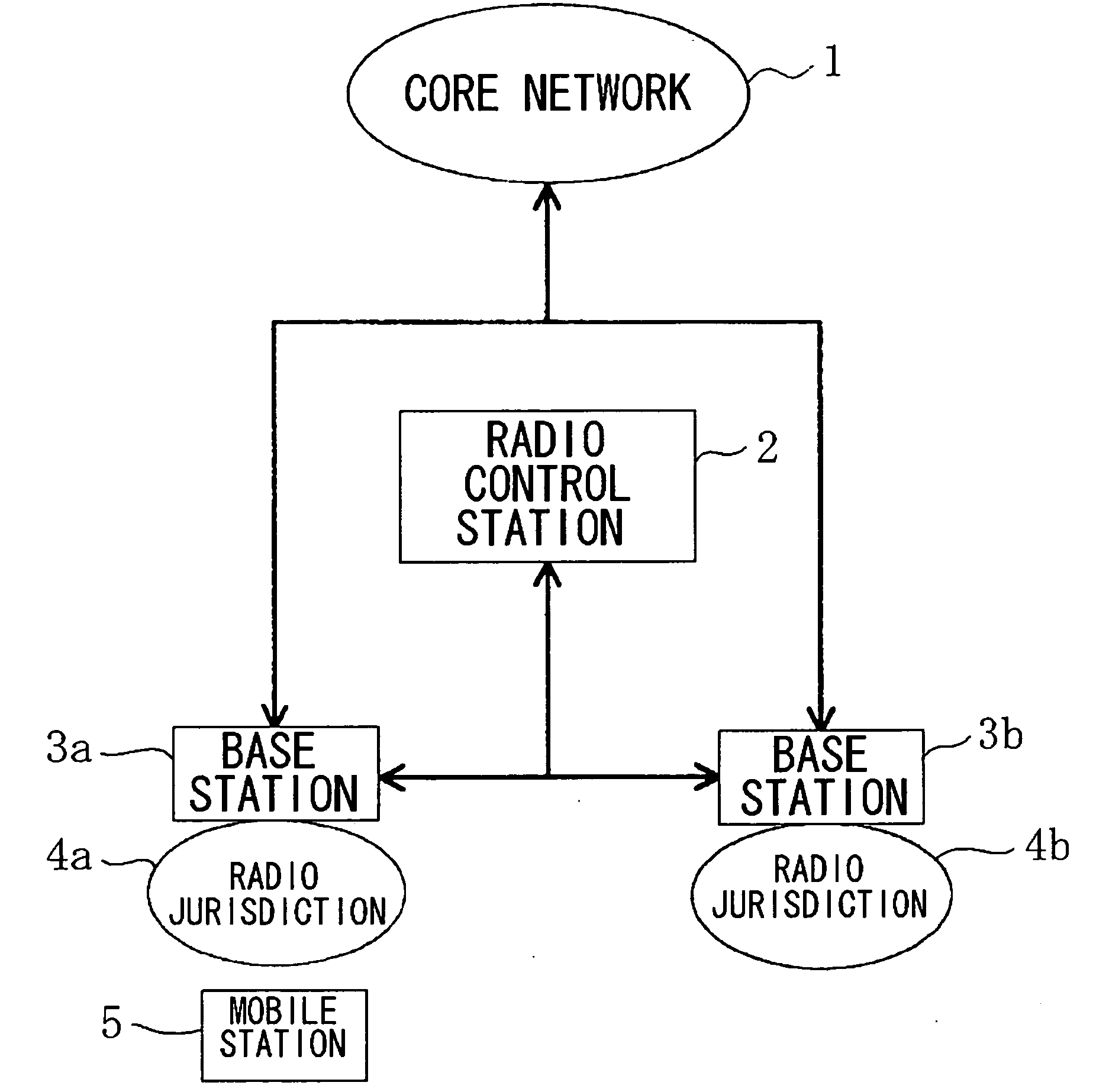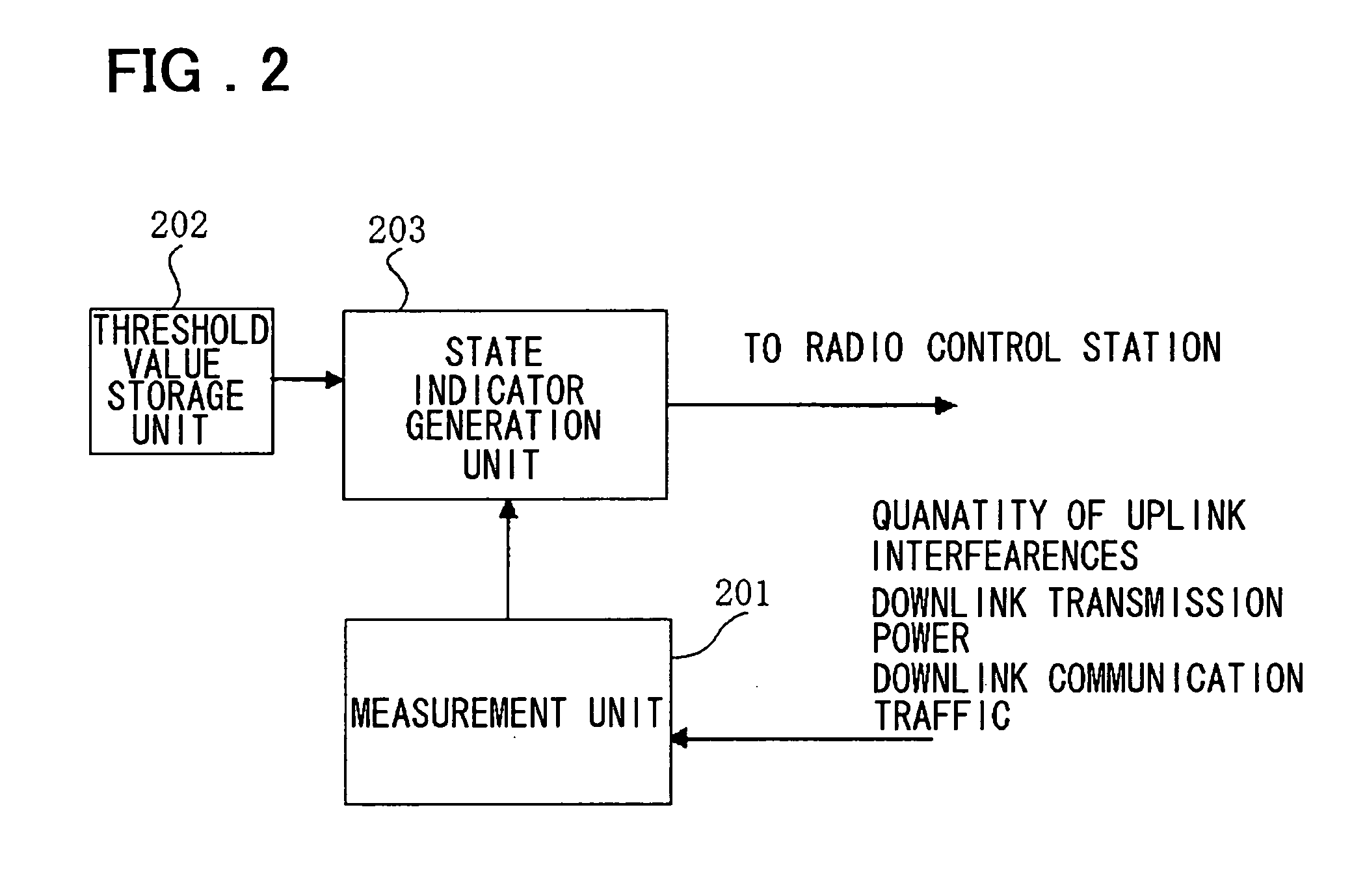Mobile communication system and access control method
a mobile communication system and access control technology, applied in the direction of network traffic/resource management, electrical equipment, selection arrangements, etc., can solve the problems of increasing interference of the communication employing the same frequency, increasing the probability of inability to achieve the desired signal quality, and increasing the probability of communication quality with the individual users. , to achieve the effect of reducing the processing load of the radio control station, reducing the delay of the signal, and reducing the load on the network
- Summary
- Abstract
- Description
- Claims
- Application Information
AI Technical Summary
Benefits of technology
Problems solved by technology
Method used
Image
Examples
first embodiment
[0052]FIG. 1 shows a schematic configuration of a mobile communication system according to a first embodiment of the present invention. This mobile communication system adopts a CDMA mobile communication system, as a radio access system, and includes base stations 3a and 3b, directly connected to a core network 1, a radio control station 2, connected to these base stations 3a and 3b, and a mobile station 5, performing a radio communication with either the base station 3a or the base station 3b. FIG. 1 shows a state in which there is one mobile station 5 in a radio jurisdiction 4a supervised by the base station 3a. Although only two base stations are shown in FIG. 1, there may be three or more base stations. In similar manner, although there is provided only one radio jurisdiction supervised by each base station, plural radio jurisdictions may also be supervised by one base station. In addition, there may be plural mobile station 5 belonging to each radio jurisdiction.
[0053] The bas...
second embodiment
[0086] The mobile communication system according to a second embodiment of the present invention will now be described. The mobile communication system according to the present second embodiment corresponds to the system shown in FIG. 1 having the configuration of the line acceptance control functions of the base station and the radio control station shown in FIGS. 2 and 4. However, the present second embodiment differs from the above-described first embodiment in that acceptance control is managed responsive to three states, namely a request accepting state, a handover accepting state and a block state. The present second embodiment is similar to the above-described first embodiment as to the method for measuring the communication traffic and reporting to the radio control station, state storage in the radio control station and as to the synthesis of communication traffic of the uplink and downlink. Thus, the corresponding explanation for the operations is omitted and only the poin...
third embodiment
[0115]FIG. 14 shows a schematic configuration of a mobile communication system according to a third embodiment of the present invention. This mobile communication system is basically the same as the system shown in FIG. 1 except that there is newly provided a user control station 6. Here, the same parts or components as those previously described are omitted and only parts or components characteristic of the present embodiment are described.
[0116] The user control station 6 relays between the base stations 3a and 3b and the core network 1, and is connected to the radio control station 2. The acceptance control operations, which are the same as those of the mobile communication system of the above-described first embodiment, are carried out by exchanging control signals between the radio control station 2, base stations 3a, 3b, mobile station 5 and the user control station 6.
[0117]FIG. 15 shows a schematic configuration of line connection control units of the radio control station ...
PUM
 Login to View More
Login to View More Abstract
Description
Claims
Application Information
 Login to View More
Login to View More - R&D
- Intellectual Property
- Life Sciences
- Materials
- Tech Scout
- Unparalleled Data Quality
- Higher Quality Content
- 60% Fewer Hallucinations
Browse by: Latest US Patents, China's latest patents, Technical Efficacy Thesaurus, Application Domain, Technology Topic, Popular Technical Reports.
© 2025 PatSnap. All rights reserved.Legal|Privacy policy|Modern Slavery Act Transparency Statement|Sitemap|About US| Contact US: help@patsnap.com



